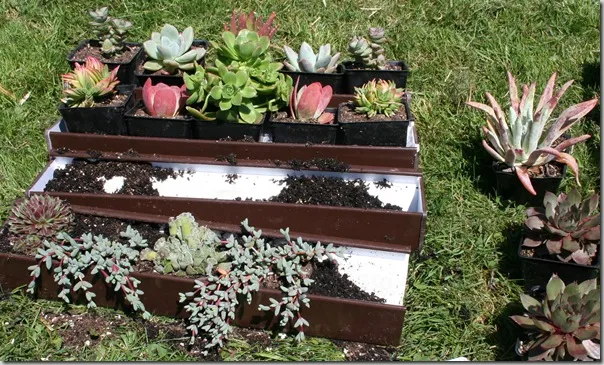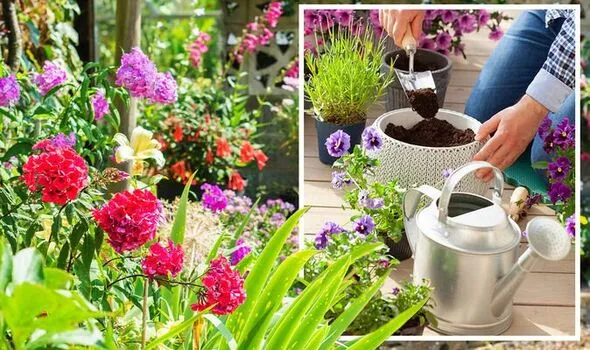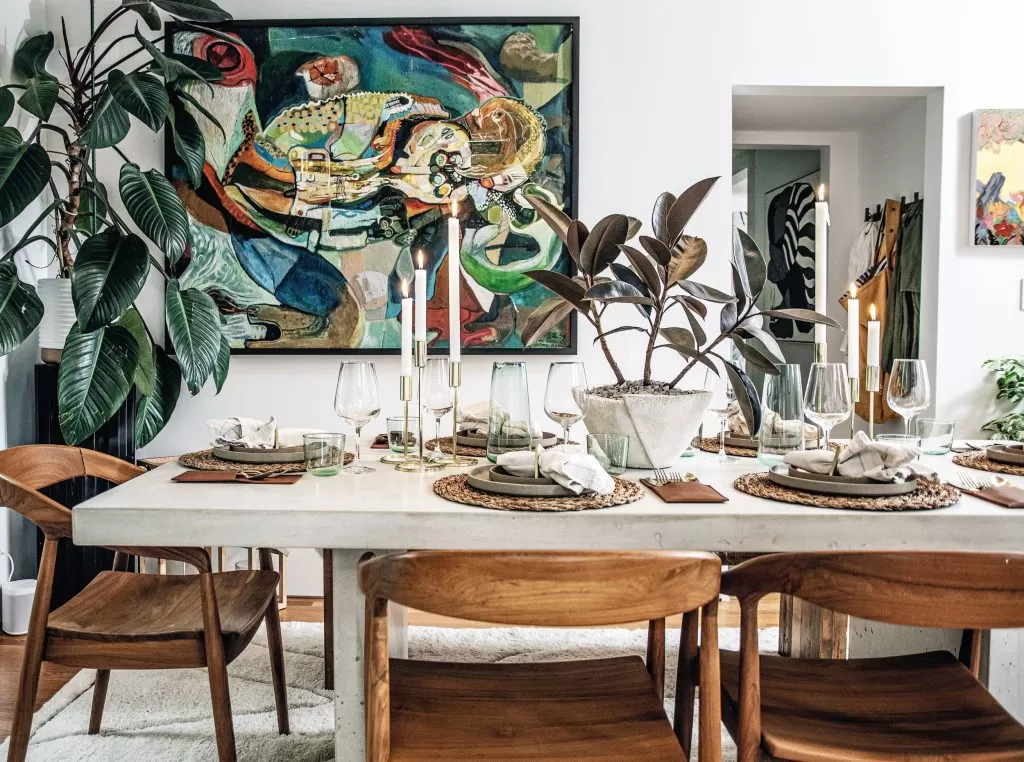- Pairing snake plants and ZZ plants creates low-maintenance, stylish indoor gardens.
- Both plants share a love for infrequent watering and tolerance for low light conditions.
- Their contrasting forms and textures offer striking visual appeal in home decor.
- Focusing on well-draining soil is key to preventing common issues like root rot for both species.
- This pairing is ideal for beginners or busy plant parents looking for success with minimal effort.
Bringing the calming presence of greenery into your home doesn’t have to mean signing up for endless watering schedules and demanding care routines. Some houseplants are wonderfully forgiving, and when paired thoughtfully, they create stunning displays that practically take care of themselves. At Thelittle.garden, we love discovering these effortless yet beautiful combinations. Today, we’re diving into one of our absolute favorites: snake plant & ZZ plant combos. This dynamic duo isn’t just easy on the eyes; they’re incredibly compatible roommates, sharing a laid-back approach to life that makes them perfect partners for your indoor garden.
Contents
- Why Companion Planting Works for Houseplants
- The Perfect Pairing: Snake Plant & ZZ Plant Combos
- Shared Traits That Make Them a Match
- How to Plant Them Together (or Nearby)
- Visual Appeal: Designing with Snake & ZZ Plants
- Care Tips for Your Duo
- Other Fantastic Companion Plants for Snake Plants
- Pothos
- Aloe Vera
- Spider Plant
- Peace Lily
- Tips for Successful Houseplant Companion Planting
- Create Your Easy Indoor Oasis
Why Companion Planting Works for Houseplants
Companion planting is often discussed for outdoor vegetable gardens, helping with pest control or nutrient sharing. Indoors, the benefits are more about aesthetics and shared environmental needs. Grouping plants with similar requirements for light, water, humidity, and soil simplifies care. It also allows you to create dense, lush arrangements that maximize space and visual impact, turning a corner or a shelf into a vibrant green vignette. When you pair plants like the snake plant and the ZZ plant, whose needs align beautifully, you set yourself up for double the beauty with half the fuss.
The Perfect Pairing: Snake Plant & ZZ Plant Combos
Imagine tall, architectural spears rising alongside the graceful, arching fronds of dark green, waxy leaves. That’s the striking visual appeal of bringing snake plants and ZZ plants together. Beyond their complementary looks, these two are practically soulmates in the low-maintenance houseplant world.
Shared Traits That Make Them a Match
The secret to a successful snake plant & ZZ plant combo lies in their remarkably similar preferences:
- Light: Both plants are famously tolerant of low light conditions, making them perfect for less-than-sunny spots in your home. While they can handle brighter indirect light, they thrive without needing a prime, sunny window sill. This shared tolerance means you don’t have to compromise on placement when grouping them.
- Water: This is perhaps their most crucial shared trait – they hate being overwatered. Both ZZ plants, with their rhizomatous roots storing water, and snake plants, being succulents, are highly drought-tolerant. They prefer their soil to dry out completely between waterings. Pairing them simplifies your watering routine; you can check the soil moisture for both at the same time.
- Soil: Good drainage is non-negotiable for both. A well-aerated potting mix that allows water to flow through easily is essential to prevent root rot. Using a cactus or succulent mix, or amending regular potting soil with perlite or coarse sand, works well for both.
- Tolerance: These aren’t finicky divas. They tolerate a range of indoor temperatures and don’t demand high humidity, adapting well to average household conditions. Their ability to handle neglect has earned them reputations as near-indestructible houseplants.
By understanding these shared needs, you can confidently pot them together (if space allows and you use appropriate soil/drainage) or group them closely, watering them on the same minimal schedule.
How to Plant Them Together (or Nearby)
While you can pot a snake plant and a ZZ plant in the same large container if you use a suitable well-draining soil mix and ensure ample drainage holes, it’s often easier and allows for better control over individual plant health to simply group them in separate pots. Choose pots that complement each other and the plants, ensuring each has adequate drainage. Place them close together on a plant stand, shelf, or the floor to create a cohesive display that looks like a single, lush planting.
Visual Appeal: Designing with Snake & ZZ Plants
The vertical, upright leaves of the snake plant (often reaching impressive heights) provide structure and height, drawing the eye upwards. The ZZ plant, with its graceful, arching stems and glossy, dark green leaflets, adds a softer, fuller texture and a lovely contrast in form. Together, they create a balanced, visually interesting arrangement that suits various interior styles, from minimalist modern to bohemian jungle.
Care Tips for Your Duo
Caring for your snake plant & ZZ plant combo is refreshingly simple:
- Watering: Water thoroughly only when the soil is completely dry, usually every 2-4 weeks depending on light and temperature. When in doubt, wait! Overwatering is the primary killer.
- Light: Place them in low to bright indirect light. Avoid direct sunlight, which can scorch leaves.
- Soil: Use a well-draining cactus/succulent mix or amend standard potting soil with perlite.
- Fertilizing: Feed sparingly, if at all. Once or twice during the growing season (spring/summer) with a diluted liquid houseplant fertilizer is plenty.
- Pests: Both are relatively pest-resistant, but occasionally check for common houseplant pests like spider mites or mealybugs.
Here’s a quick look at the basics for each plant:
- Snake Plant
- Scientific Name: Dracaena trifasciata (formerly Sansevieria trifasciata)
- Common Names: Mother-in-Law’s Tongue, Viper’s Bowstring Hemp
- Light: Low to bright indirect
- Water: Allow soil to dry completely between waterings
- ZZ Plant
- Scientific Name: Zamioculcas zamiifolia
- Common Names: Eternity Plant, Zanzibar Gem, Emerald Palm
- Light: Low to bright indirect
- Water: Allow soil to dry completely between waterings
 ZZ plant potted growing near other houseplantsA ZZ plant with its glossy, dark green leaves thrives alongside other low-maintenance houseplants in matching containers.
ZZ plant potted growing near other houseplantsA ZZ plant with its glossy, dark green leaves thrives alongside other low-maintenance houseplants in matching containers.
Other Fantastic Companion Plants for Snake Plants
While the snake plant & ZZ plant combo is a star, the snake plant is sociable and gets along well with other popular, easy-care houseplants. If you’re looking to expand your indoor jungle, consider these other buddies:
Pothos
Known for their trailing vines and air-purifying qualities, Pothos plants (Epipremnum aureum) share the snake plant’s tolerance for varying light conditions and minimal watering needs. Their vining habit contrasts beautifully with the snake plant’s upright structure, creating a layered look.
 Pothos plant growing indoorsA vibrant Pothos plant cascades from a hanging basket, its lush foliage adding texture and color near other indoor plants.
Pothos plant growing indoorsA vibrant Pothos plant cascades from a hanging basket, its lush foliage adding texture and color near other indoor plants.
- Pothos
- Scientific Name: Epipremnum aureum
- Common Names: Devil’s Ivy, Hunter’s Rove, Golden Pothos
- Light: Low to bright indirect
- Water: Allow soil to dry out between waterings
Aloe Vera
As fellow succulents, Aloe Vera plants (Aloe vera) also appreciate infrequent watering and bright, indirect light (though they can tolerate lower light than many succulents). Their spiky, fleshy leaves offer a different texture and form that pairs well with the snake plant, and you get the added bonus of having fresh aloe gel readily available!
 Aloe plant growing in living roomA spiky Aloe Vera plant sits in a terracotta pot, its healing leaves soaking up bright light in a sunny living room spot.
Aloe plant growing in living roomA spiky Aloe Vera plant sits in a terracotta pot, its healing leaves soaking up bright light in a sunny living room spot.
- Aloe Vera
- Scientific Name: Aloe vera
- Common Names: Aloe, Babosa
- Light: Bright indirect
- Water: Allow soil to dry out completely between waterings
Spider Plant
Spider plants (Chlorophytum comosum) are classic, easy-care houseplants known for their air-purifying abilities and cheerful “spiderette” babies. They tolerate similar light levels to snake plants and prefer soil to dry out slightly between waterings, though they might need a bit more frequent watering than true succulents like snake plants or Aloes.
 Spider plant against black backgroundA classic Spider plant displays its variegated arching leaves and cascading plantlets against a dark background.
Spider plant against black backgroundA classic Spider plant displays its variegated arching leaves and cascading plantlets against a dark background.
- Spider Plant
- Scientific Name: Chlorophytum comosum
- Common Names: Ribbon Plant, Spider Ivy
- Light: Low to bright indirect
- Water: Allow soil to dry slightly between waterings
Peace Lily
Peace lilies (Spathiphyllum) are known for their elegant white blooms and tolerance for low light. While they tend to be a bit more expressive about needing water (they droop dramatically), they still benefit from allowing the top layer of soil to dry out between waterings, much like the “drought tolerant-lite” needs of Pothos or Spider Plants compared to Snake/ZZ.
 Peace lily growing with other houseplantsA Peace Lily with its dark green leaves and striking white spathes stands among other indoor greenery.
Peace lily growing with other houseplantsA Peace Lily with its dark green leaves and striking white spathes stands among other indoor greenery.
- Peace Lily
- Scientific Name: Spathiphyllum
- Common Names: Peace Lily
- Light: Low to bright indirect
- Water: Allow top soil to dry between waterings
Tips for Successful Houseplant Companion Planting
No matter which plants you choose to group with your snake plant, always remember these key principles:
- Drainage is Paramount: Ensure all pots have drainage holes and use appropriate, well-draining soil mixes.
- Know Their Needs: Even with compatible plants, be aware of each species’ specific preferences, especially regarding light and water. While snake and ZZ plants are very similar, other pairings might have slight differences.
- Observe Your Plants: Your plants will tell you if they are happy (or not!). Yellowing leaves often indicate overwatering, while wilting can mean underwatering (though with snake/ZZ, wilting from lack of water is rare; it’s usually a sign of root rot from too much).
Create Your Easy Indoor Oasis
Pairing houseplants with similar needs is a smart way to simplify care while creating beautiful displays. The snake plant & ZZ plant combo stands out as an exceptionally easy and stylish choice for anyone looking to add resilient greenery to their home. Their shared tolerance for neglect and low light, combined with their contrasting forms, makes them a winning team.
Ready to bring this power duo into your home? Give the snake plant and ZZ plant combo a try and see how effortlessly you can cultivate a thriving indoor garden. Share your own successful plant pairings in the comments below!







































